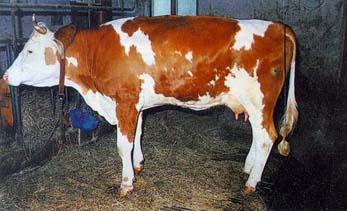The positive detection of golden oats in the ration of an animal suspected of having calcinosis is a prerequisite, but not proof of the presence of calcinosis. Only patho-morphological and patho-histological examinations after the death of the animal allow a clear diagnosis of calcinosis by showing the typical calcifications.
In the present project, the ultrasound examination of the abdominal aortic wall using a rectal transducer, but also other vessels and internal organs, will be carried out for the first time. The results of these examinations, which can provide precise information about the thickness of the vessel wall and thus any calcium deposits, should be compared with the usual clinical and patho-morphological and histological results. The findings should be collected on a representative number of healthy and sick cattle and sheep. Biopsies from sites of calcinosis predilection should be taken from these animals when they are slaughtered, which would evaluate previous examination methods.
The results of this project provide an important basis for the early, rapid, reliable and cost-effective diagnosis of calcinosis in cattle and sheep, which can reduce the economic damage to the affected farms.







